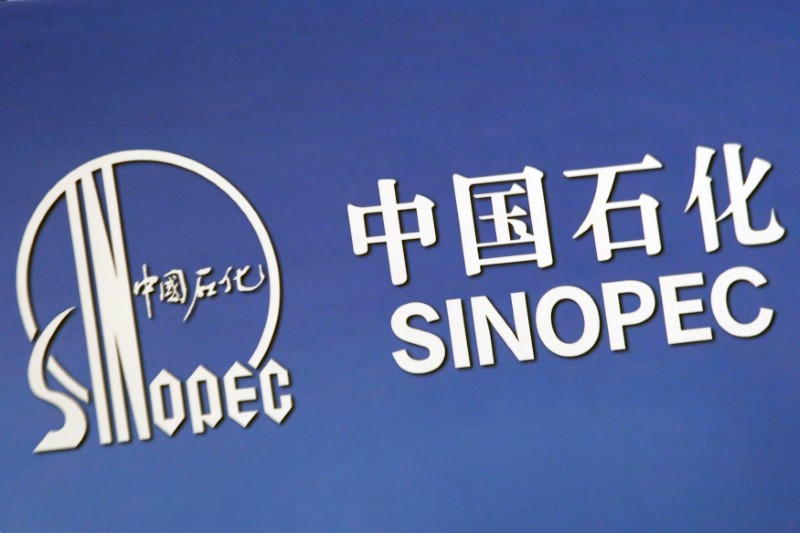 © Reuters. FILE PHOTO: The company logo of China’s Sinopec Corp is displayed at a news conference in Hong Kong
© Reuters. FILE PHOTO: The company logo of China’s Sinopec Corp is displayed at a news conference in Hong KongBy Florence Tan
SINGAPORE (Reuters) – Sinopec (SS:), Asia’s largest refiner, will boost U.S. crude oil imports to an all-time high as China tries to reduce its trade deficit with the United States, two sources with knowledge of the matter said on Wednesday.
The company’s trading arm Unipec has bought 16 million barrels, or about 533,000 barrels per day (bpd), of U.S. crude to load in June, they said, the largest volume ever to be lifted in a month by the company.
“The government has encouraged us to lift more U.S. crude,” one of the sources said.
Sinopec could not immediately be reached for comment.
China has pledged to buy more U.S. goods to reduce the huge trade deficit with the United States and help ease the threat of a trade war between the world’s two biggest economies. Energy and commodities are high on Washington’s list of products for sale.
Unipec’s June oil purchases would be worth about $1.1 billion at current prices (). They would represent a notable increase in China’s imports of U.S. crude, which have averaged about 330,000 barrels a day for the six-month period ended in February, according to U.S. Energy Department data.
An arbitrage opportunity has also opened up after U.S. crude futures recorded the widest discount in three years against Brent () at $8.06 a barrel last week, enabling Unipec to boost imports to replace more expensive Middle East oil.
Washington is keen to sell more of the country’s surging oil and gas production. However, U.S. energy exports can grow only gradually due to infrastructure bottlenecks, and only if U.S. oil, gas and other goods remain attractively priced compared with global competition.
“We want to buy more but they might not be able to export more” because of infrastructure constraints in the U.S. Gulf Coast, a source said.
The United States exported a record 2.6 million bpd of crude oil in the week ended May 11, and analysts estimate the country’s limit is somewhere between 3.5 million and 4 million bpd.
However, reaching that level would be a stretch, because only one terminal – the Louisiana Offshore Oil Port (LOOP) – is equipped to handle the very large crude carriers (VLCCs) that transit many Asian ports; the LOOP only started testing VLCCs for export in February.
“Whenever we talk about these numbers, the issues are not just of pure dock capacity. For China, the more important issue for them is the size of vessel that you can load. (Of) all of the main (U.S.) regions where loading is occurring, none can load a VLCC directly,” said Sandy Fielden, director of research in commodities and energy at Morningstar.
Also, China prefers a heavier quality of crude whereas the bulk of U.S. oil exports is light crude, the source said.
Fusion Media or anyone involved with Fusion Media will not accept any liability for loss or damage as a result of reliance on the information including data, quotes, charts and buy/sell signals contained within this website. Please be fully informed regarding the risks and costs associated with trading the financial markets, it is one of the riskiest investment forms possible.
Source: Investing.com




























